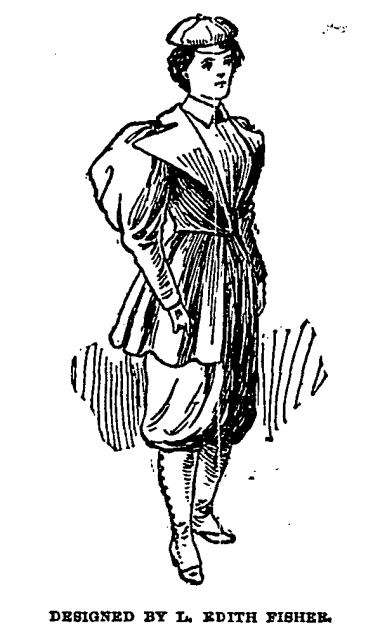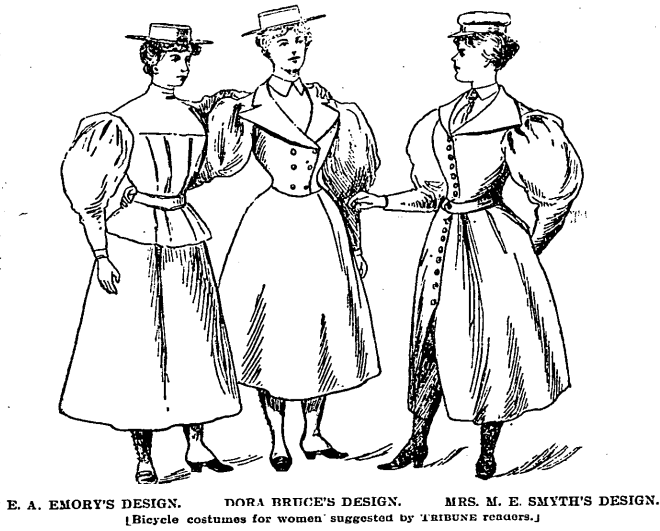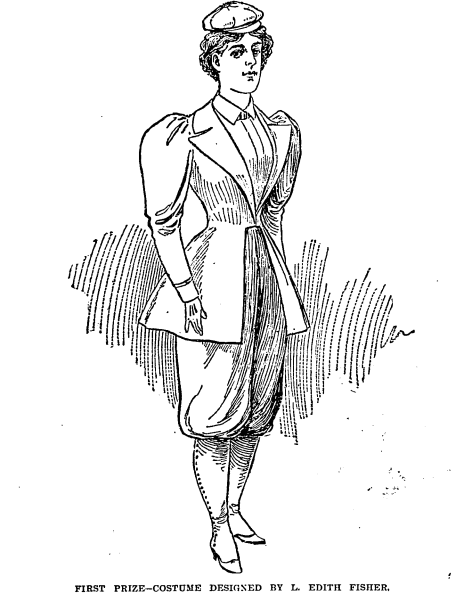As the 19th century became the 20th, America's first cycling boom became a tool for the liberation of women, encouraging independence, risk-taking, and athleticism. "The craze was meaningful, especially, for women, writes Adrienne LaFrance. "Both Susan B. Anthony and Elizabeth Cady Stanton are credited with declaring that 'woman is riding to suffrage on the bicycle,' a line that was printed and reprinted in newspapers at the turn of the century."
It also encouraged a change in dress. Lucy Porter, a Chicago stenographer with fourteen century rides of 100 miles or more—mostly to Elgin and Aurora—to her credit by 1894, told the Tribune why she became "the first Chicago woman brave and plucky and sensible enough to adopt the use of trousers."

"I doubled my usual speed, although we were facing the wind," she said. "I kept in advance of the club without effort, which I could not possibly have done in ordinary dress. My wheel seemed five pounds lighter. A skirt is a nuisance. It gets soiled and torn and constantly tangles in the wheel. I was delighted with the experiment and shall never ride in skirts again."
Two years later, the Trib reported that "the day of rational dress is here, or at least well on the way," crediting "the influence of the bicycle." A dressmaker fretted that "the summer girl doesn't wear frills and laces anymore," and "she doesn't even look at a piece of chiffon," thanks to the popularity of the bicycle suit.
But not all Chicago women were sufficiently "brave and plucky and sensible enough" to opt for pants, so in May 1895, the Tribune ran a cycling fashion contest with a first prize of $100—over $2,800 in 2015 dollars.

"L. Edith Fisher claims for her design the greatest possible utility as well as artistic merit," they wrote. "The lapels are made to fold over the chest in case of a cold wind. The collar also turns up and buttons across the throat with a strap concealed underneath. This protects the back of the neck in case of a cold wind blowing from behind…. The flowing tail of the jacket conceals the posterior view of the trousers, conceded always to be the unsightly part of the much-discussed garment."

"Mrs. C.D. Newell says of the suit she advocates that it is convenient for a rainy day, for business, or for bicycle riding. The suit consists of four pieces—blouse, jacket, circular cap, and divided skirt. The skirt can be adjusted to any length desired for riding or walking, and can be adjusted while on the street without inconvenience."

"Mrs. M.E. Smyth of Englewood suggests a two-piece costume. The underwaist can be the ordinary shirt waist with sleeves, though in hot weather it would be more comfortable without them. The main point is the pants, reaching only to the knee, with over-drapery falling down to the shoe top, covering the form and not interfering with the movement. On the back of the pants, as well as on the dress, a button can be placed, confining the overdress to the pants at the back and preventing it flying up or becoming loose from the short skirt at the back."
And the winner was… Edith Fisher's trim, practical, rational creation, which got a deluxe illustration and its pattern printed in the newspaper.

Fisher's bloomers survived the competition, but the paper threw up a red flag in an editorial, the kind of timelessly grumpy slippery-slope argument that has been passed down from one op-ed grouch to the next. "If the trousers are confined to the bicycle all will go well," they wrote. "It is not the present that troubles long-suffering, patient man. It is what the future will bring. Is not this the first step toward wearing breeches at home? As the evolution develops will she wear them to market, on short walks from the house, in calling, in shopping, and finally, everywhere?"



